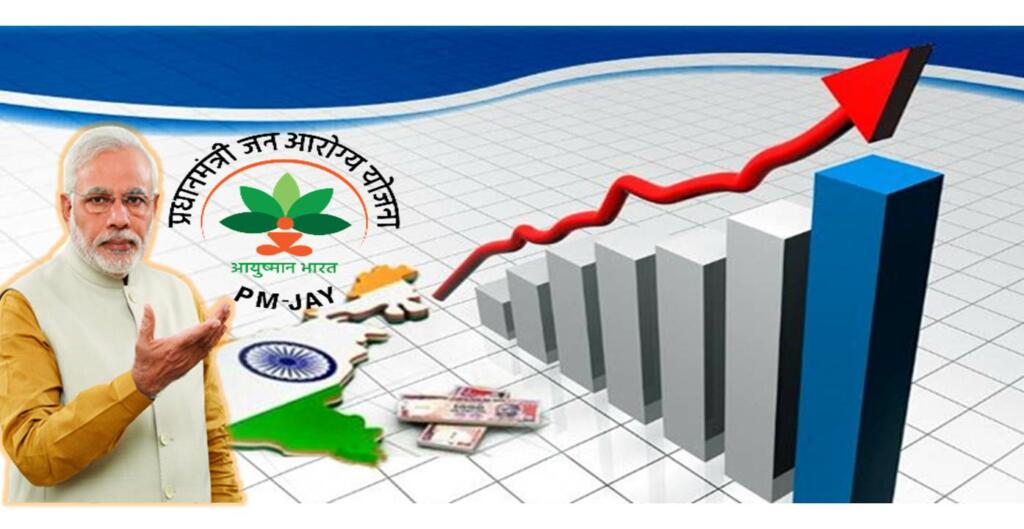- In his message to the nation on World Health Day, PM Modi emphasized savings created due to various initiatives
- Ayushman Bharat and Jan aushadhi stores have emerged as key faces of change in India’s healthcare sector
- The savings created due to these progressive initiatives have led to rising in India’s economic prospects
Over the last 6-7 years India has witnessed some path-breaking changes in the infrastructure segment. One of the glaring examples of this is a change in the healthcare infrastructure. By reforming this key area through schemes like Ayushman Bharat, the Modi government has not just improved the health of an average Indian but has also boosted the Indian economy.
PM Modi addresses the nation on World Health Day
Expressing his opinion on the occasion of World Health Day, PM Modi emphasized the kind of development India’s healthcare has made during the past few years. Underlining the changes and their impact on India’s future, PM Modi wrote on Twitter, “In the last 8 years, the medical education sector has undergone rapid transformations. Several new medical colleges have come up. Our Government’s efforts to enable the study of medicine in local languages will give wings to the aspirations of countless youngsters.”
In the last 8 years, the medical education sector has undergone rapid transformations. Several new medical colleges have come up. Our Government’s efforts to enable study of medicine in local languages will give wings to the aspirations of countless youngsters.
— Narendra Modi (@narendramodi) April 7, 2022
However, Prime Minister also said that his government is not going to sit idle. He informed the nation that the government is focussing on making sure that quality and affordable healthcare is available to every Indian. Citing the Ayushman Bharat scheme’s success, PM Modi wrote, “It makes every Indian proud that our nation is home to the world’s largest healthcare scheme, Ayushman Bharat.”
The Government of India is working tirelessly to augment India’s health infrastructure. The focus is on ensuring good quality and affordable healthcare to our citizens. It makes every Indian proud that our nation is home to the world’s largest healthcare scheme, Ayushman Bharat.
— Narendra Modi (@narendramodi) April 7, 2022
PM Modi also stressed on the importance of these changes in the average Indian’s life. He apprised that by focussing on providing cost effective healthcare to the nation, poor and middle class people have been able to save much more compared to the days when Modi government was not at the helm of affairs.
I feel very happy when I interact with beneficiaries of schemes such as PM Jan Aushadhi. Our focus on affordable healthcare has ensured significant savings for the poor and middle class. At the same time we are strengthening our Ayush network to further boost overall wellness.
— Narendra Modi (@narendramodi) April 7, 2022
Modi government has changed the scenario
Initiatives like providing health insurance coverage to millions of Indians, low price Jan aushadhi stores, and the Ministry of Ayush (Ayurveda, Yoga and Naturopathy, Unani, Siddha, and Homeopathy) have changed the landscape of the health sector in the country.
Ayushman Bharat – Pradhan Mantri Jan Arogya Yojana (PMJAY) has become the face of this change in the country. Under the scheme, more than 50 crore Indians can avail of virtually zero-cost health insurance up to Rs 5 lakhs from the Modi government. In Budget 2022-23, the Modi government allocated Rs 6,412 crore for the same. Comparable provisions were made in earlier years as well.
Read more: Ayushman Bharat: A monumental success, World’s largest healthcare scheme completes 1 year
The success story of Jan aushadhi stores
In spite of being proven to be not less effective than others, India’s generic medicines were not promoted by big pharma. So, the Modi government decided to take this responsibility on its own and open Janaushadhi stores, where medicines cost nearly one-tenth of the price fixed by pharma companies.
It has been a massive success story and the Modi government has planned to increase the number of Jan aushadhi stores to 10,000. In March 2019, TFI reported that the Janaushadhi stores helped Indians save more than Rs 1,000 crores. With the increase in stores, it’s natural that the savings must have skyrocketed.
Read more: Janaushadhi scheme saves around 1000 crore of the poor households
Savings helped the Indian economy to become Aatmanirbhar
People’s savings is the key pillar of the Indian economy. The biggest strength of the Indian economy is its consumer base. With more than 1.4 billion consumers, India is second only to China. But having a consumer base is not enough, they should have a constant income to be able to spend and drive demand.
Unfortunately, most Indians’ savings used to get spent on managing the health of their family members. In the last 4 years, Modi government has helped Indians save more than Rs 20,000 crore, which they would have spent on healthcare. Similarly, the cost of medicines has also been cut down due to flourishing Jan Aushadhi stores.
Read more: IMF’s report on India’s food security is a tight slap to detractors of the Modi government
Thus Indians were free to spend on whatever they would like. This led to more spending, which led to more production, ultimately leading to increased Gross Domestic Product.
